Oman, with its majestic landscapes and rich cultural heritage, offers more than just breathtaking scenery to travelers—it also presents a glimpse into a world of enchanting traditions and age-old customs. Among these, Omani weddings stand out as a vibrant blend of ritual, celebration, and family unity. Traditional wedding customs in Oman are a true reflection of the country’s values, history, and the graceful interplay between modernity and tradition.
In this detailed exploration, we dive deep into the wedding traditions in Oman, offering insights into every stage of the ceremony—from the pre-wedding rituals to the grandeur of the wedding day and the cherished post-wedding celebrations.
Introduction to Omani Wedding Traditions
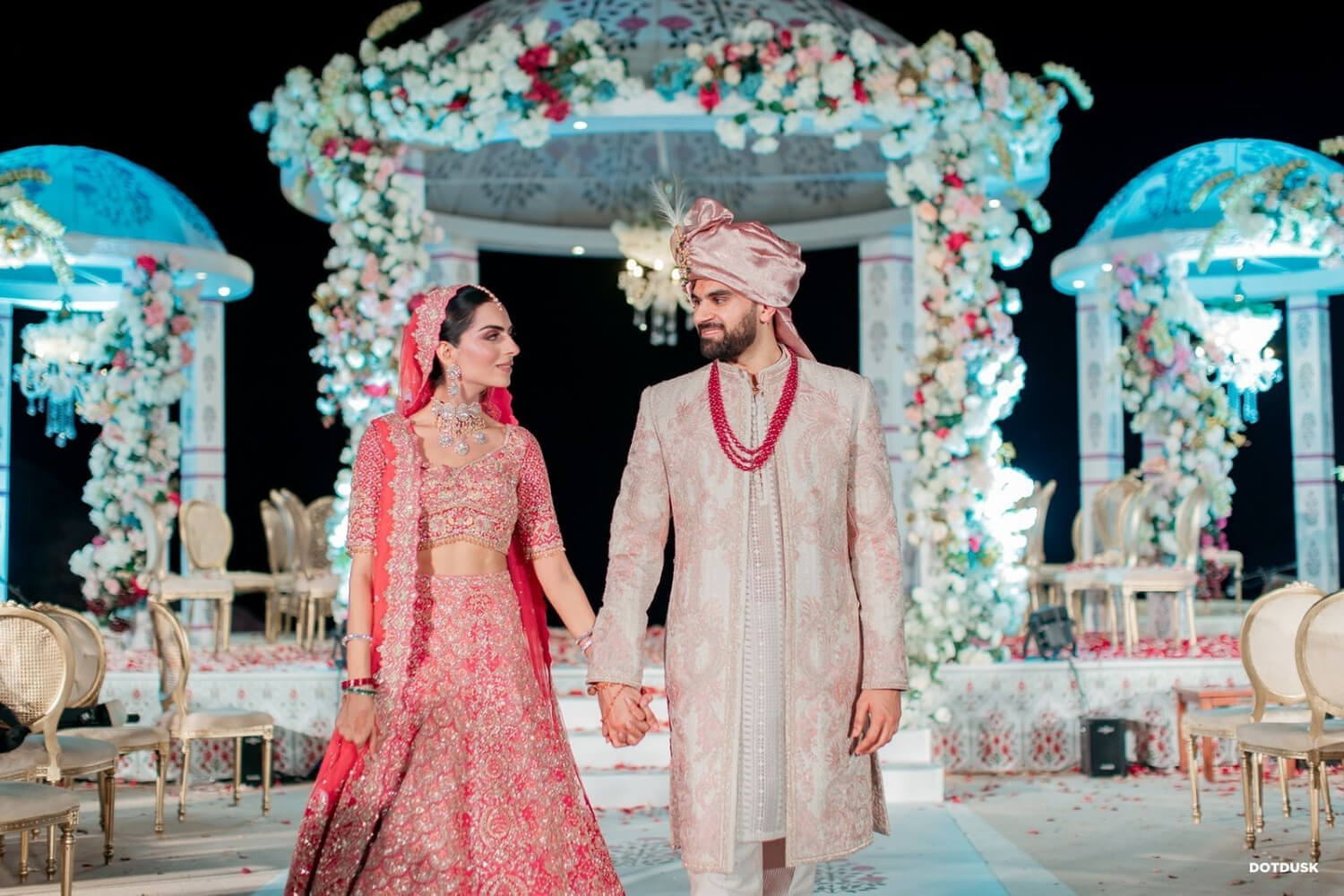
Oman weddings are far more than a union between two individuals; they are an intricate celebration of heritage, community, and spirituality. Rooted in centuries-old customs, these ceremonies echo the rich tapestry of Omani history, blending Bedouin traditions with Islamic influences and modern nuances. Each wedding is not only a family affair but also a communal celebration where neighbors, friends, and extended families come together to witness and participate in the festivities.
One of the most captivating aspects of oman weddings is how they showcase the country’s hospitality. Guests are treated to an abundance of traditional foods, music, and dance, all of which serve as a medium to honor both the past and the evolving present. The essence of these ceremonies lies in their ability to bring people together, making every event a symbol of unity and communal joy. For travelers, understanding these wedding traditions in Oman offers a window into the soul of this ancient yet ever-evolving society.
The traditional wedding customs in Oman are layered with symbolism. Each ritual—whether it be the solemnity of the marriage proposal or the exuberance of the wedding banquet—carries specific meanings that highlight respect, honor, and commitment. The meticulous attention to detail, from the ceremonial attire to the choice of music, reflects the importance of preserving cultural identity in a rapidly globalizing world. As you explore the following sections, you will discover how each stage of the ceremony contributes to an overall narrative that is both timeless and uniquely Omani.
Pre-Wedding Traditions in Oman
Before the wedding day arrives, a series of pre-wedding events set the stage for what is to be a grand and meticulously orchestrated celebration. These preliminary rituals not only serve to prepare the families and the couple for the union ahead but also reinforce social bonds and community ties. In Oman, the period leading up to the wedding is marked by a blend of solemnity, joy, and a profound sense of tradition.
The pre-wedding phase is characterized by carefully planned events that underscore the importance of family approval, mutual respect, and the affirmation of cultural values. It is during this period that the relationship between the couple is formally recognized and celebrated by both families. This section examines three crucial pre-wedding customs: the marriage proposal and engagement (Al Khutbah), the negotiation of mahr, and the delightful henna night (Laylat Al Henna).
Marriage Proposal and Engagement (Al Khutbah)
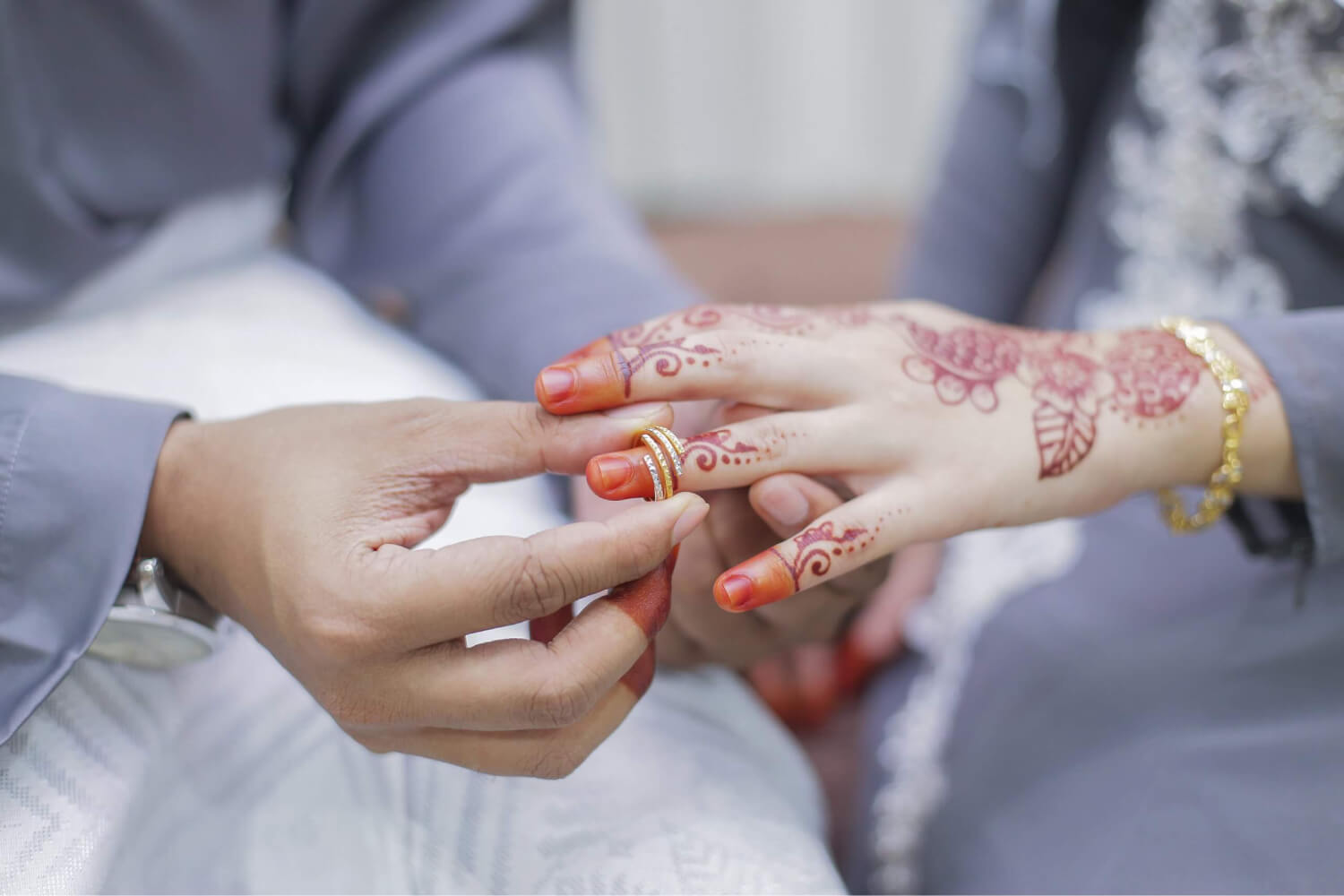
The journey toward an Omani wedding traditionally begins with the marriage proposal, a formal process known as Al Khutbah. This ceremony is far more than a casual introduction; it is a respectful and measured exchange between the families, where the couple’s future is discussed and agreed upon in the presence of elders.
In many Oman communities, the marriage proposal is steeped in ritual. The process typically begins when the groom’s family approaches the bride’s family with an expression of interest. This initial contact is a formal announcement that paves the way for a series of meetings. Traditionally, these gatherings take place in the home of the bride’s family, where elders share their blessings and guidance.
The dialogue during the proposal is measured, emphasizing respect, honor, and the union of two families rather than just two individuals. During this meeting, discussions often include the financial and material aspects of the marriage, ensuring that both families have a clear understanding of their roles and responsibilities. While modern influences have introduced flexibility into these conversations, the core principle remains unchanged: a successful proposal is one that unites families and sets the stage for a harmonious future.
This pre-wedding event encapsulates the spirit of marriage rituals in oman, where every word and gesture is imbued with cultural significance. It is a moment of anticipation and hope, as both families envision the union as a blessing that will strengthen familial ties and preserve longstanding traditions. The respectful nature of Al Khutbah highlights the value Omani society places on family consensus, ensuring that the foundation of the marriage is built on mutual understanding and shared expectations.
Mahr – The Bridal Dowry
One of the most critical elements of an Omani wedding is the negotiation and presentation of mahr—the bridal dowry. Mahr is a gift from the groom to the bride and is considered both a token of respect and a form of financial security for the woman. Its importance in marriage rituals in oman cannot be overstated, as it symbolizes the groom’s commitment to the future well-being of his bride.
The concept of mahr is deeply rooted in Islamic tradition and has been adapted over centuries to reflect local customs and economic conditions. In Oman, the dowry is not merely a monetary exchange but a comprehensive package that can include jewelry, property, or other valuable items. This tradition underscores the value placed on the bride’s role and the responsibility the groom assumes in ensuring her security and comfort.
Negotiations surrounding mahr are typically conducted with sensitivity and discretion. Both families engage in discussions to arrive at an agreement that is fair and respectful. The agreed-upon mahr is often recorded as part of the marriage contract, formalizing the groom’s promise. This contract is not only a legal document but also a sacred covenant that reinforces the commitment of both parties.
For many, the negotiation of mahr is a delicate balance between modern expectations and traditional practices. While contemporary Omani couples may opt for more symbolic gestures, many families continue to observe this tradition rigorously, honoring the historical significance of the dowry. This careful negotiation and mutual respect for mahr reflect the broader values that underpin oman weddings, making it a central pillar in the celebration of marriage.
Henna Night (Laylat Al Henna)
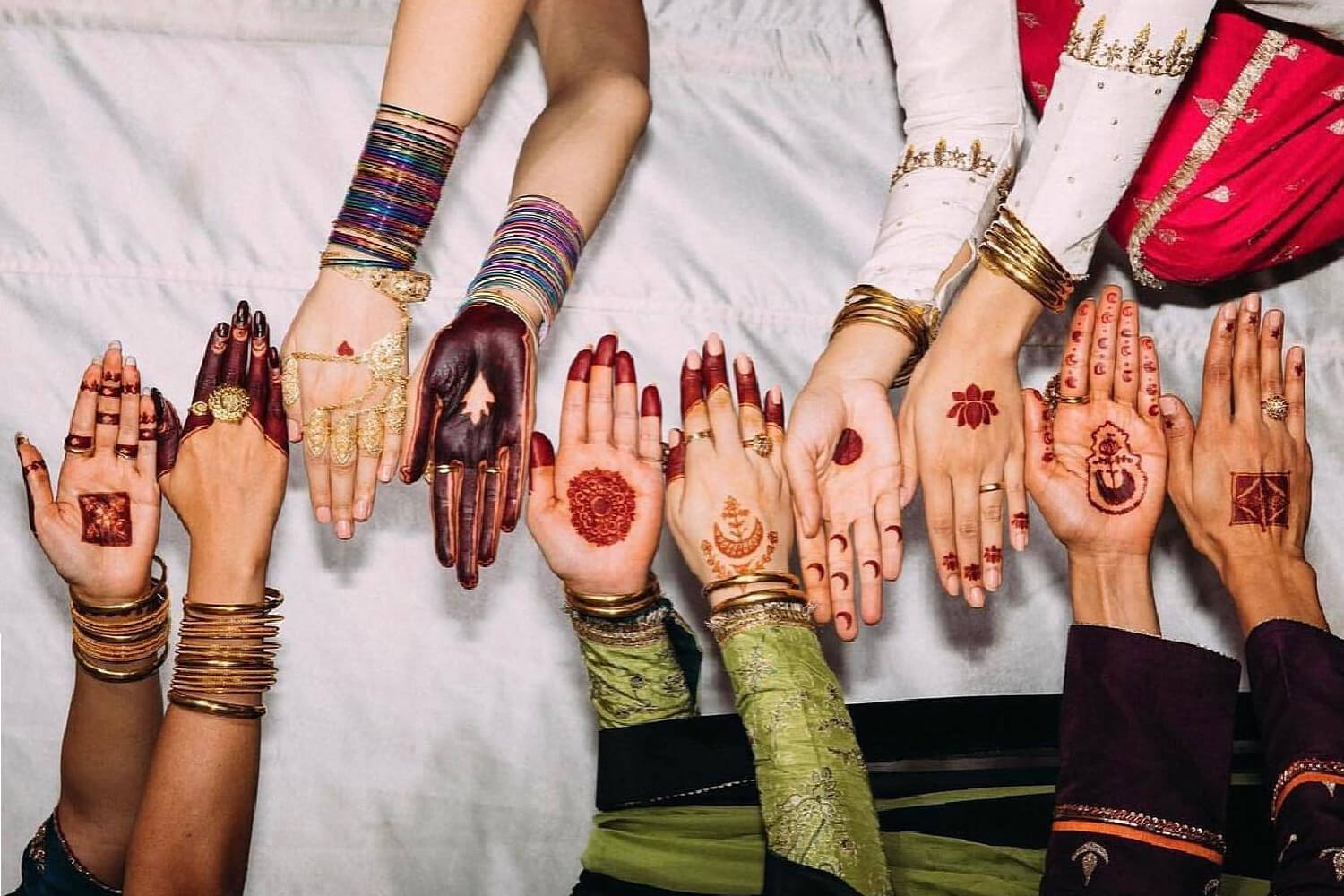
In the days leading up to the wedding, the atmosphere is filled with excitement and anticipation, and one of the most vibrant pre-wedding celebrations is the henna night, known locally as Laylat Al Henna. This colorful tradition is a highly anticipated event where the bride and her close female relatives and friends gather to adorn themselves with intricate henna designs.
Henna, a natural dye derived from the Lawsonia inermis plant, has been used for centuries to celebrate special occasions across many cultures. In Oman, the henna night is a time-honored ritual that symbolizes beauty, fertility, and the promise of a prosperous married life. The application of henna is often accompanied by lively music, traditional dances, and the recitation of poetry, creating an atmosphere of joy and camaraderie.
During the henna night, professional henna artists or skilled family members carefully apply detailed patterns on the bride’s hands and feet. Each stroke of the henna is believed to bring good luck and ward off negative energies. For many Omani women, the designs are not only decorative but also carry symbolic meanings related to the bride’s journey into married life.
The celebration is both intimate and communal, as it also offers an opportunity for women to share stories, exchange advice, and bond over shared experiences. It is a night of laughter, music, and heartfelt wishes, where the bride is celebrated as she transitions from a daughter to a wife. Laylat Al Henna is a vivid reminder of the deep-rooted customs that continue to influence wedding traditions in Oman, highlighting the blend of art, spirituality, and community.
The Oman Wedding Day: A Grand Celebration
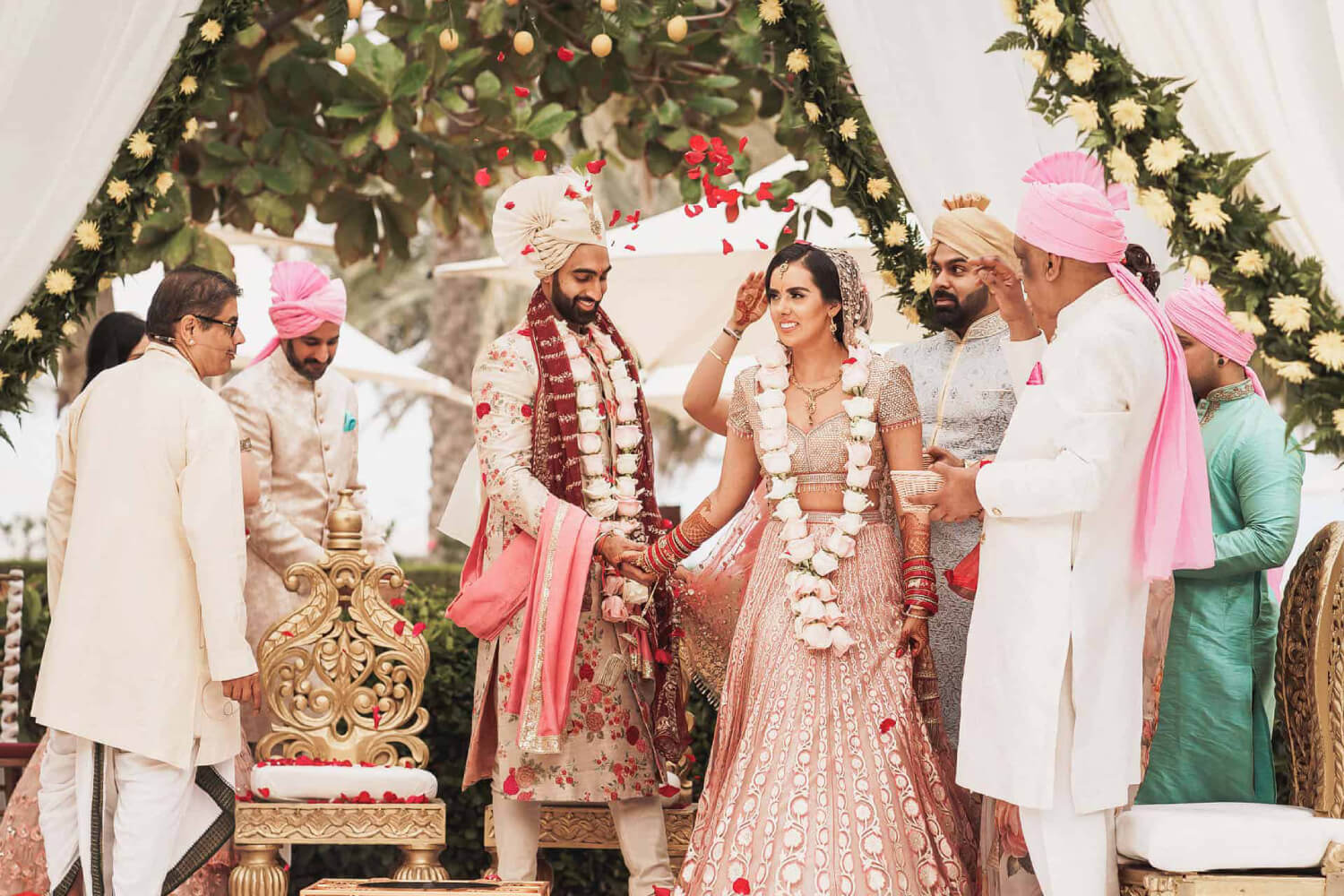
The wedding day itself is the pinnacle of the celebrations—a day when the entire community comes together to honor the union of two souls. From the early morning preparations to the final moments of the evening, the wedding day in Oman is an elaborate and multi-faceted event that encapsulates the essence of traditional culture and modern elegance.
Oman wedding days are characterized by a series of meticulously planned rituals that are both deeply symbolic and visually spectacular. Every detail, from the choice of attire to the orchestration of the procession, is carefully curated to ensure that the day is memorable for everyone involved. Let’s delve into the core components of the wedding day, which together create an immersive experience of oman weddings.
Traditional Attire for the Bride and Groom
One of the most visually striking elements of an Omani wedding is the traditional attire worn by the bride and groom. Clothing in Oman is not merely a matter of fashion; it is a powerful expression of identity, history, and social status. On the wedding day, every stitch, embroidery, and accessory carries a meaning that goes beyond aesthetics.
For the bride, the ensemble often includes a beautifully embroidered dress paired with a matching headscarf and ornate jewelry. Traditional designs may incorporate intricate patterns and symbolic motifs that have been passed down through generations. The color choices, too, hold significance—bright hues symbolize joy and prosperity, while the detailed embellishments pay homage to the bride’s cultural heritage. In some regions, the bride may also wear a ceremonial veil, adding an element of mystique and tradition.
The groom, on the other hand, typically dons a dishdasha—a long, flowing robe that is both elegant and functional. Complemented by a traditional headgear such as a kumma or a massar, the groom’s attire reflects both the pride and the dignity associated with his role in the ceremony. This sartorial expression is not only a nod to the past but also a celebration of modern Omani craftsmanship, where traditional techniques blend seamlessly with contemporary styles.
The care taken in selecting and wearing these garments speaks volumes about the respect Omani society holds for its traditions. For visitors and cultural enthusiasts alike, the striking visuals of the bride and groom in their traditional attire offer a window into the soul of Oman, where every element of the wedding day is imbued with meaning.
The Wedding Procession (Zaffa)
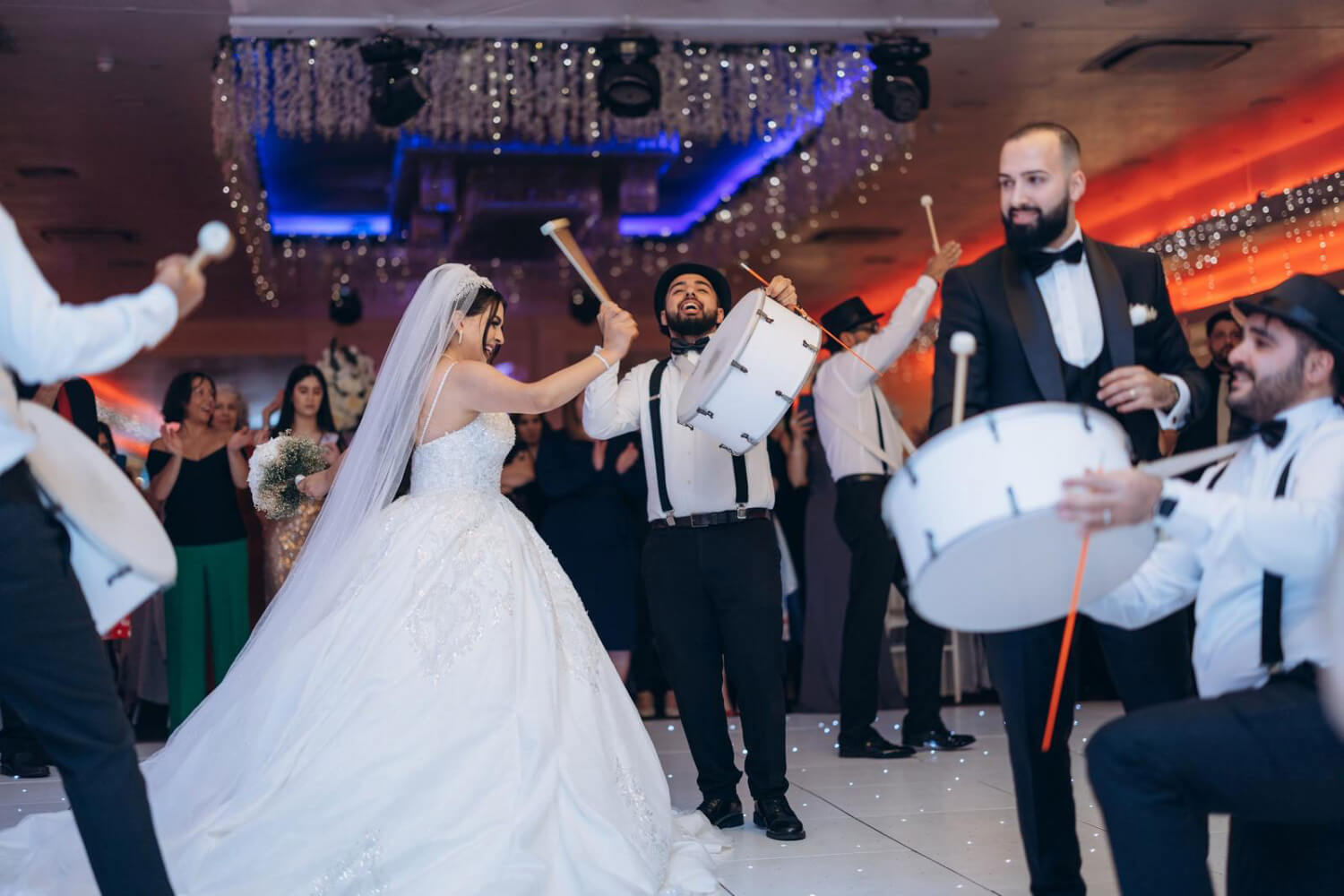
Following the preparations and the formalities of the early ceremonies, the wedding procession, locally known as the Zaffa, marks the commencement of the main celebration. The Zaffa is a vibrant parade that not only announces the arrival of the bride and groom but also sets the tone for the festive spirit that defines oman weddings.
Traditionally, the Zaffa is led by a group of musicians, drummers, and sometimes dancers who perform to the rhythmic beats of traditional instruments. The procession winds through the streets, often accompanied by an outpouring of cheers and well-wishes from family members and friends. This display of communal joy is both a public declaration of the union and an affirmation of the deep-rooted traditions that celebrate life’s most important milestones.
The Zaffa is an exuberant mix of tradition and celebration. Modern influences have introduced elements such as contemporary music and choreographed dance routines, yet the heart of the procession remains a testament to the longstanding customs of Oman. It is a moment when the energy of the community is at its peak—a day when the ordinary transforms into the extraordinary through a shared sense of celebration and belonging.
For travelers looking to immerse themselves in authentic cultural experiences, witnessing a Zaffa offers a firsthand look at the passion and pride that characterize wedding traditions in Oman. The blend of sound, movement, and visual splendor creates a sensory journey that leaves a lasting impression, making it a highlight of any cultural itinerary.
The Nikah Ceremony
At the core of the wedding day lies the Nikah ceremony, the religious ritual that formalizes the marriage contract. This sacred event is conducted by a religious officiant and is deeply embedded in Islamic tradition, reflecting the spiritual foundation upon which the union is built.
The Nikah ceremony is characterized by its simplicity and solemnity. It is a moment of profound commitment, where both the bride and groom make vows in the presence of Allah and their families. The ceremony often includes the recitation of verses from the Quran, a series of prayers, and the signing of the marriage contract. This contract is not merely a legal formality; it represents a covenant of mutual respect, support, and lifelong commitment.
In Oman, the Nikah is both a private and communal event. While the immediate families are the primary witnesses, the community’s presence adds to the sacredness of the moment. The ritual emphasizes the unity of the couple not just as individuals, but as part of a broader network of familial and social responsibilities. The focus is on creating a bond that is both spiritual and practical—a union that is blessed by faith and celebrated by the community.
The elegance and simplicity of the Nikah ceremony are what make it one of the most cherished components of marriage rituals in oman. It is a reminder that, beyond the festivities and celebrations, the true essence of a wedding lies in the sacred promise of love, respect, and unwavering commitment.
The Wedding Banquet (Walima)
The Walima is where culinary excellence meets cultural artistry, offering guests a lavish spread of traditional Omani cuisine that reflects the country’s rich gastronomic heritage. The banquet is meticulously organized, with attention given to every detail—from the decor to the arrangement of seating. Traditional dishes such as shuwa (slow-cooked lamb), rice infused with spices, and an array of local appetizers are served in generous portions. Each dish is a culinary ode to Oman’s diverse cultural influences and the bountiful produce of its lands.
Music, dance, and storytelling are integral to the wedding banquet. Throughout the evening, live performances and traditional music keep the guests entertained, creating an ambiance of merriment and togetherness. The Walima is not just a meal—it is a multi-sensory experience that encapsulates the spirit of Oman and the joyous nature of its weddings. Guests leave not only with full stomachs but with hearts warmed by the genuine hospitality and shared celebrations that define Omani culture.
For those exploring wedding traditions in Oman, the wedding banquet stands out as a testament to the nation’s commitment to celebrating life’s most precious moments with exuberance and care. It is an experience that lingers in the memory long after the last guest has departed, embodying the true essence of an Oman wedding.
Post-Wedding Traditions and Celebrations in Oman

While the wedding day itself is a culmination of planning and excitement, the celebrations in Oman continue even after the formal ceremonies have ended. Post-wedding traditions provide a gentle transition from the excitement of the day into the new phase of married life. These rituals are deeply symbolic, focusing on the emotional and social integration of the bride into her new family and community.
Following the grand festivities of the wedding day, post-wedding traditions serve as a bridge between the old and the new. They allow both families to process the change, celebrate the union, and share in the continued joy of the marriage. In Oman, these traditions underscore the enduring values of respect, community, and familial love. Here, we examine two significant post-wedding rituals: the bride’s departure (Wadaa) and the welcoming of the bride into the groom’s family.
The Bride’s Departure (Wadaa)
In many cultures, the departure of the bride from her parental home is a bittersweet moment, and in Oman, this ritual is known as Wadaa. The Wadaa ceremony marks the emotional transition of the bride from her childhood home to her new life with her husband. It is a solemn yet hopeful occasion, symbolizing the end of one chapter and the beginning of another.
The departure is conducted with deep reverence and a mix of emotions. Family members gather to bid farewell to the bride in a private and heartfelt ceremony. Although the event is tinged with melancholy, it is also imbued with blessings, as the bride embarks on a journey that promises growth, happiness, and the nurturing of new familial bonds. The rituals involved may include the exchange of personal tokens and words of wisdom from elder family members, each carrying a symbolic weight meant to guide the bride in her new life.
For many, the Wadaa is a poignant reminder of the enduring power of familial love and the inevitable changes that life brings. It serves as a gentle closure to the pre-wedding era while simultaneously heralding the new beginnings that come with marriage. This transitional moment is a vital aspect of marriage rituals in Oman, highlighting the respect for family ties and the importance of moving forward with grace and gratitude.
Welcoming the Bride into the Groom’s Family
The final stage of the traditional wedding customs in Oman involves the ceremonial welcoming of the bride into the groom’s family. This ritual is a joyful and celebratory affair, symbolizing the merging of two families and the start of a shared future. Unlike the emotional farewell of the Wadaa, this event is filled with exuberance and optimism, reflecting the groom’s family’s warm embrace of the new bride.
The welcoming ceremony is often marked by a series of symbolic gestures, such as the presentation of gifts, the recitation of blessings, and the sharing of a communal meal. Each act is designed to affirm the bride’s new role within the family and to solidify the bonds that will support her in the years to come. In some regions, traditional songs and dances are performed to honor the bride, ensuring that her integration into the family is both respectful and celebratory.
This ritual is a cornerstone of Oman weddings, as it reinforces the idea that marriage is not only a union of two individuals but also the coming together of two families with shared values and aspirations. The welcoming ceremony encapsulates the spirit of communal joy and mutual respect, elements that are central to wedding traditions in Oman. For visitors and locals alike, it serves as a heartwarming reminder of the strength and continuity of family ties in Oman society.
If you want to have an authentic experience in Oman, let’s contact with True Oman Tours to have an unforgettable trips!

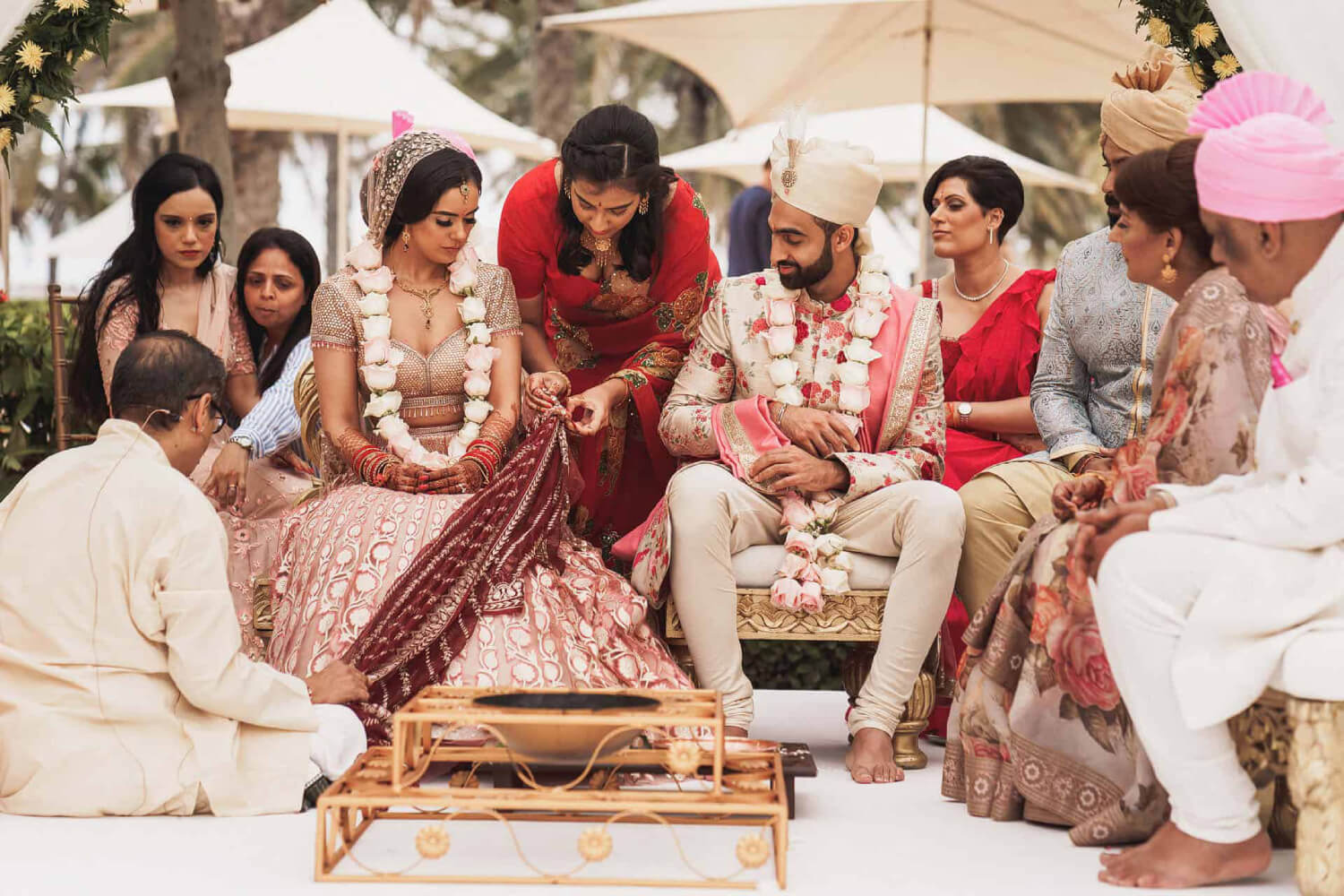
0 Comment